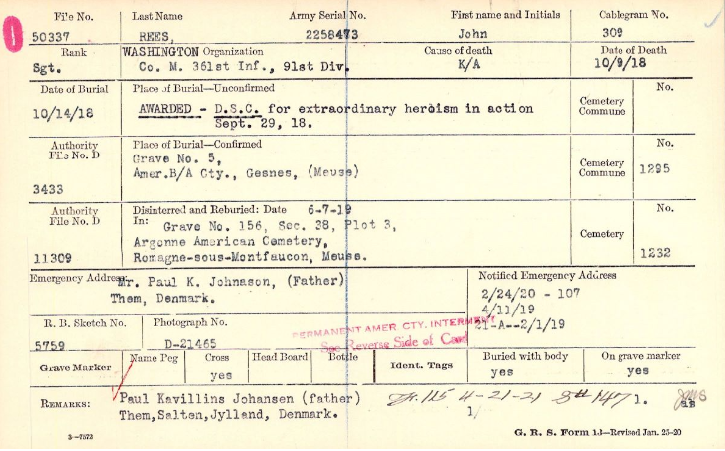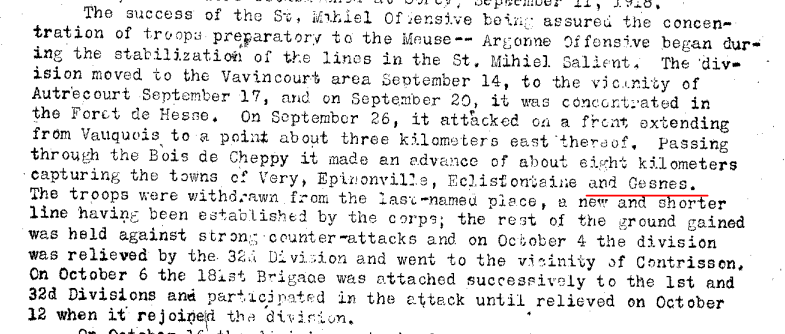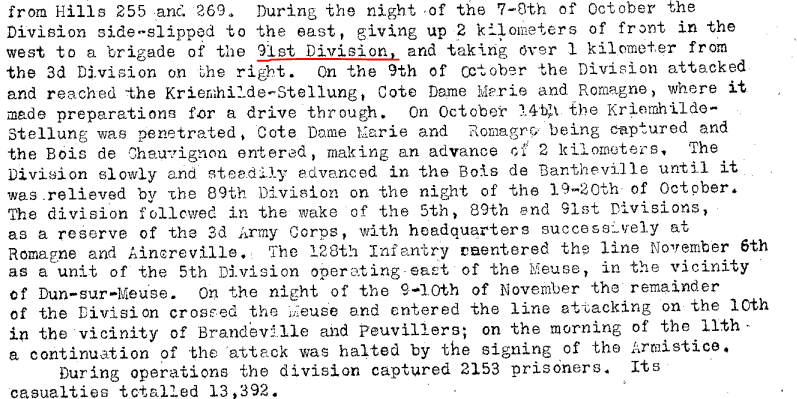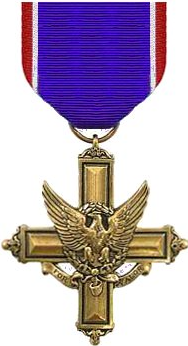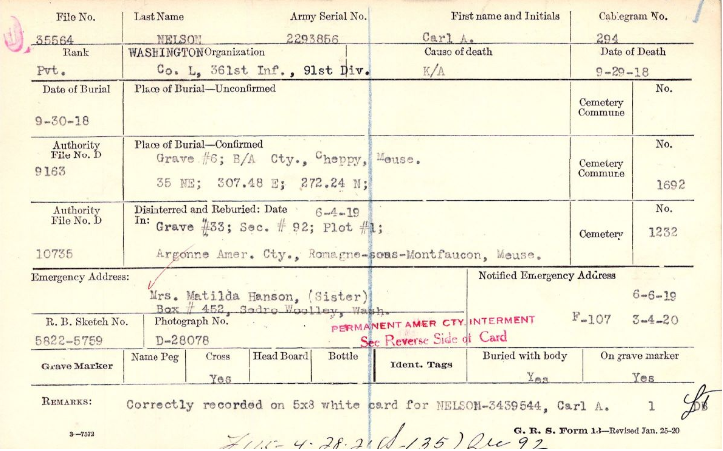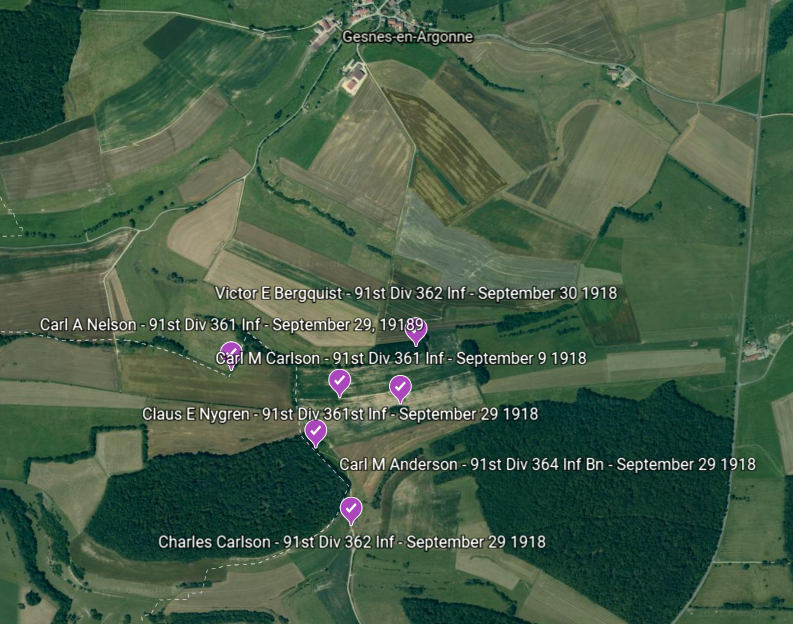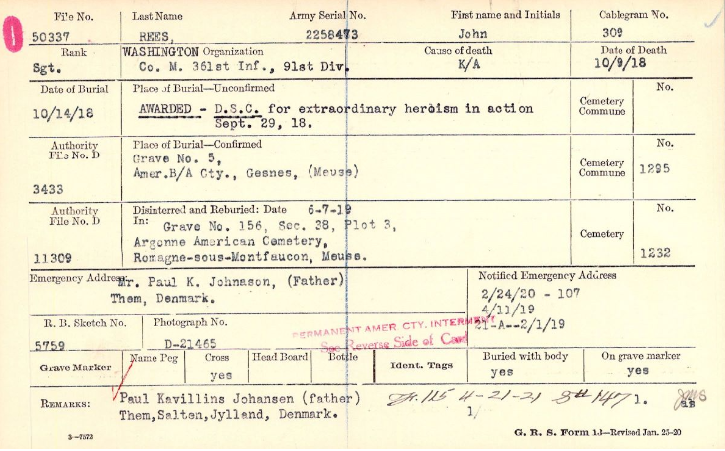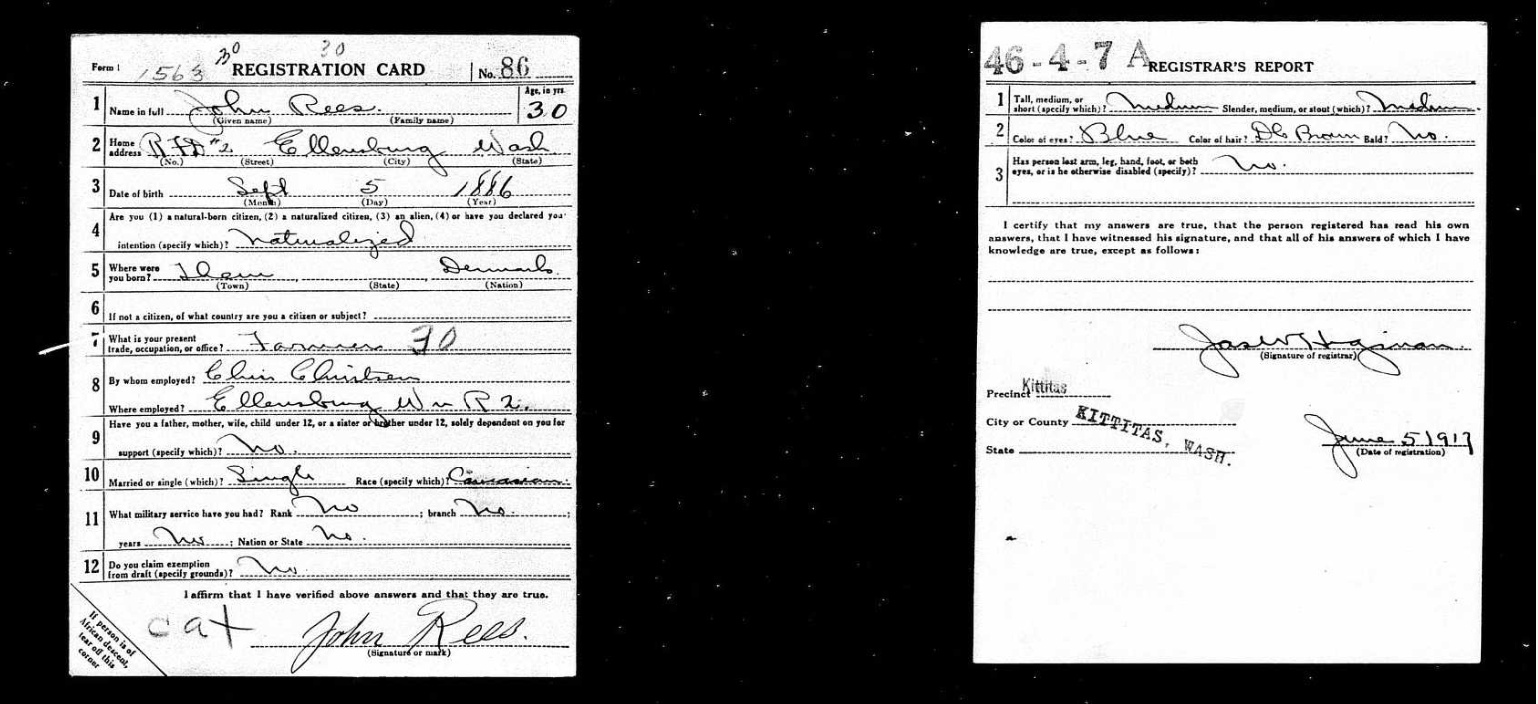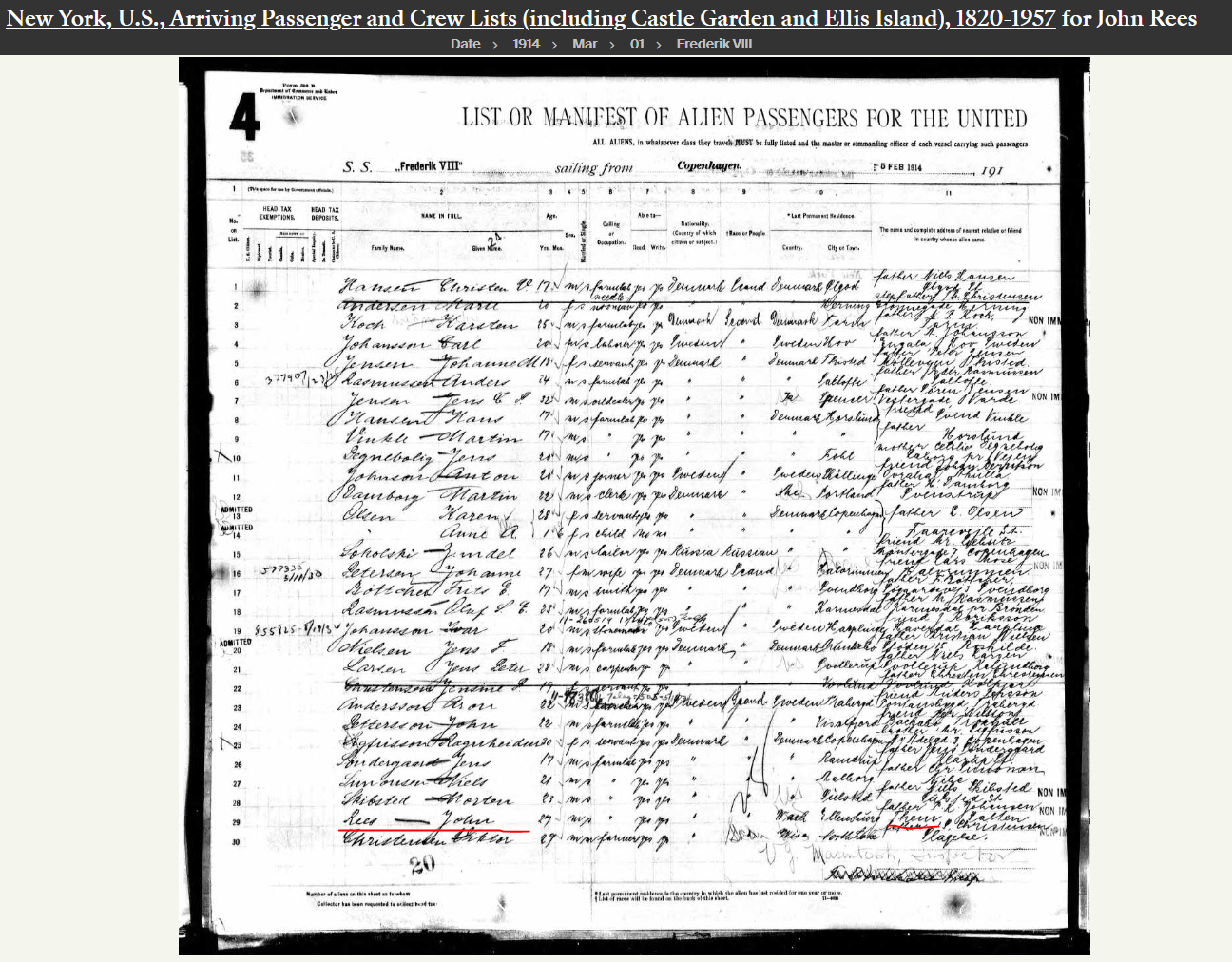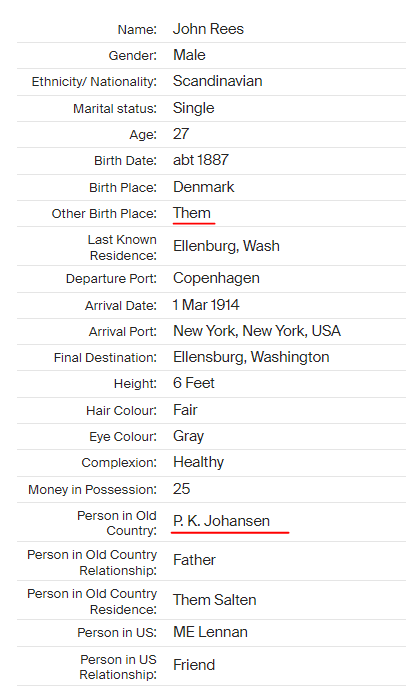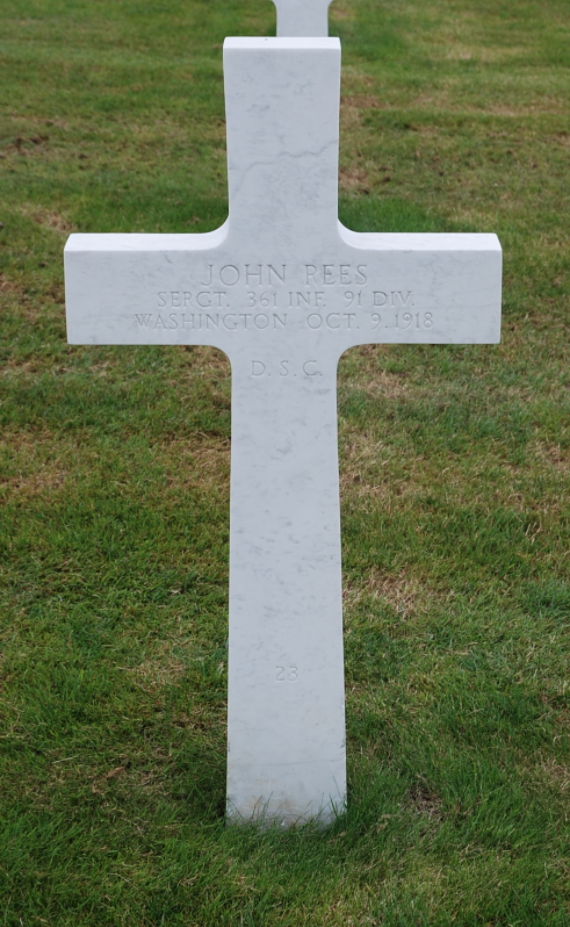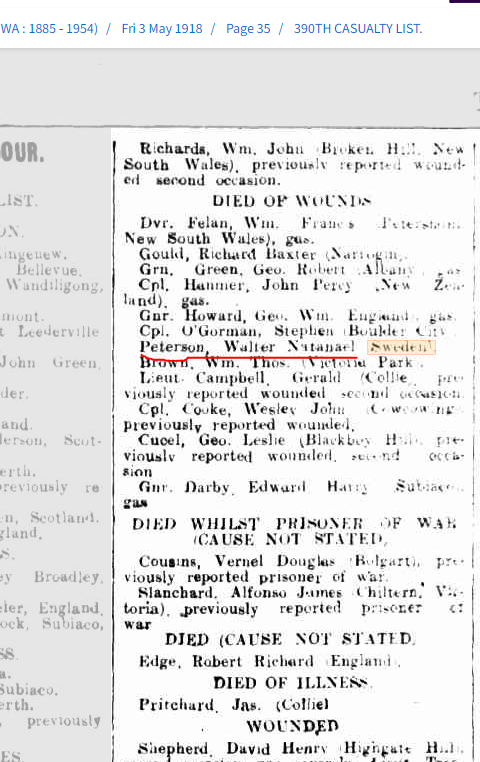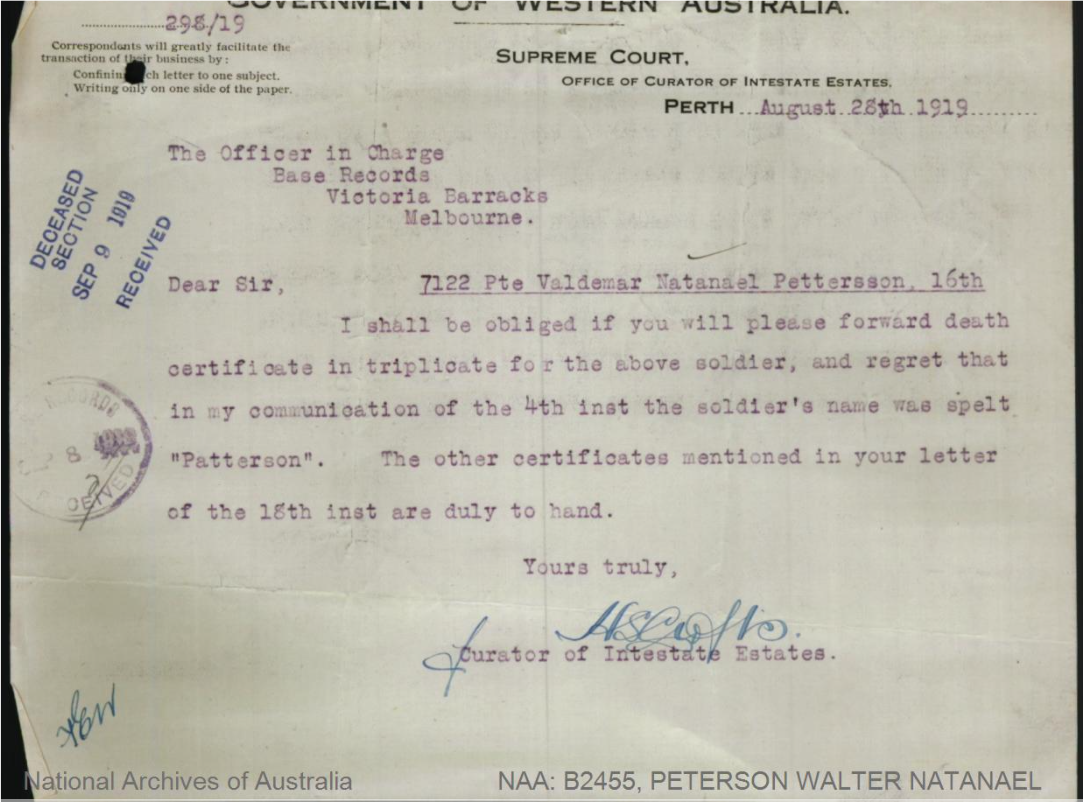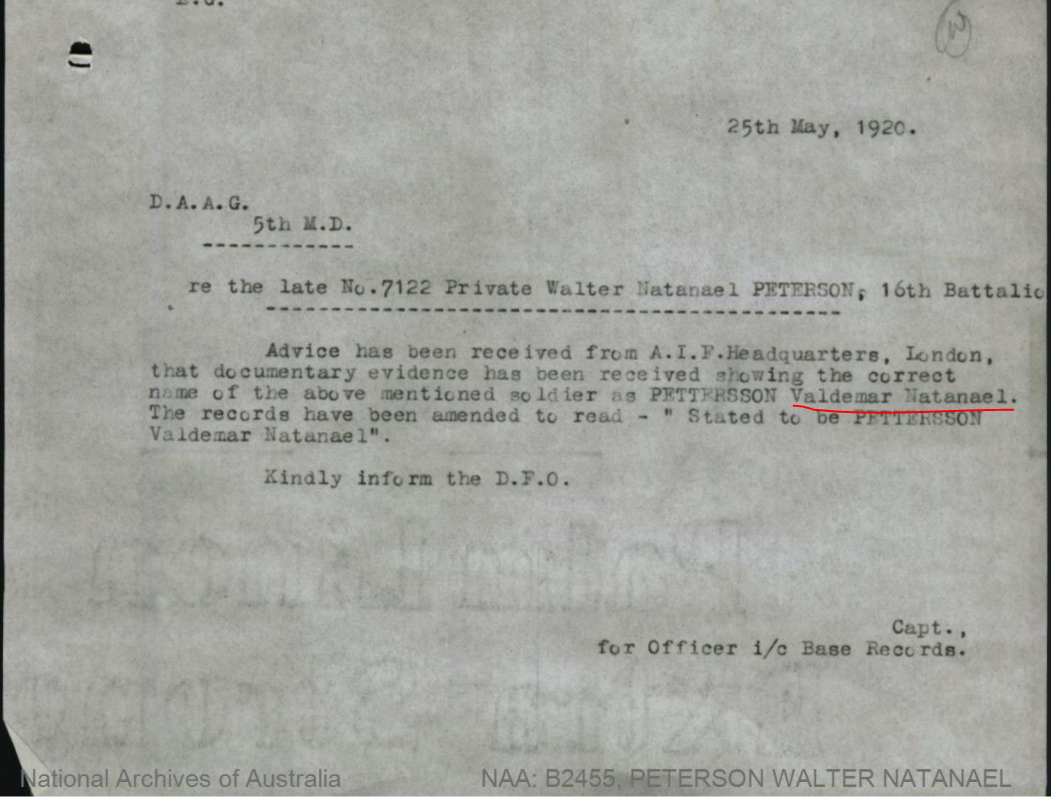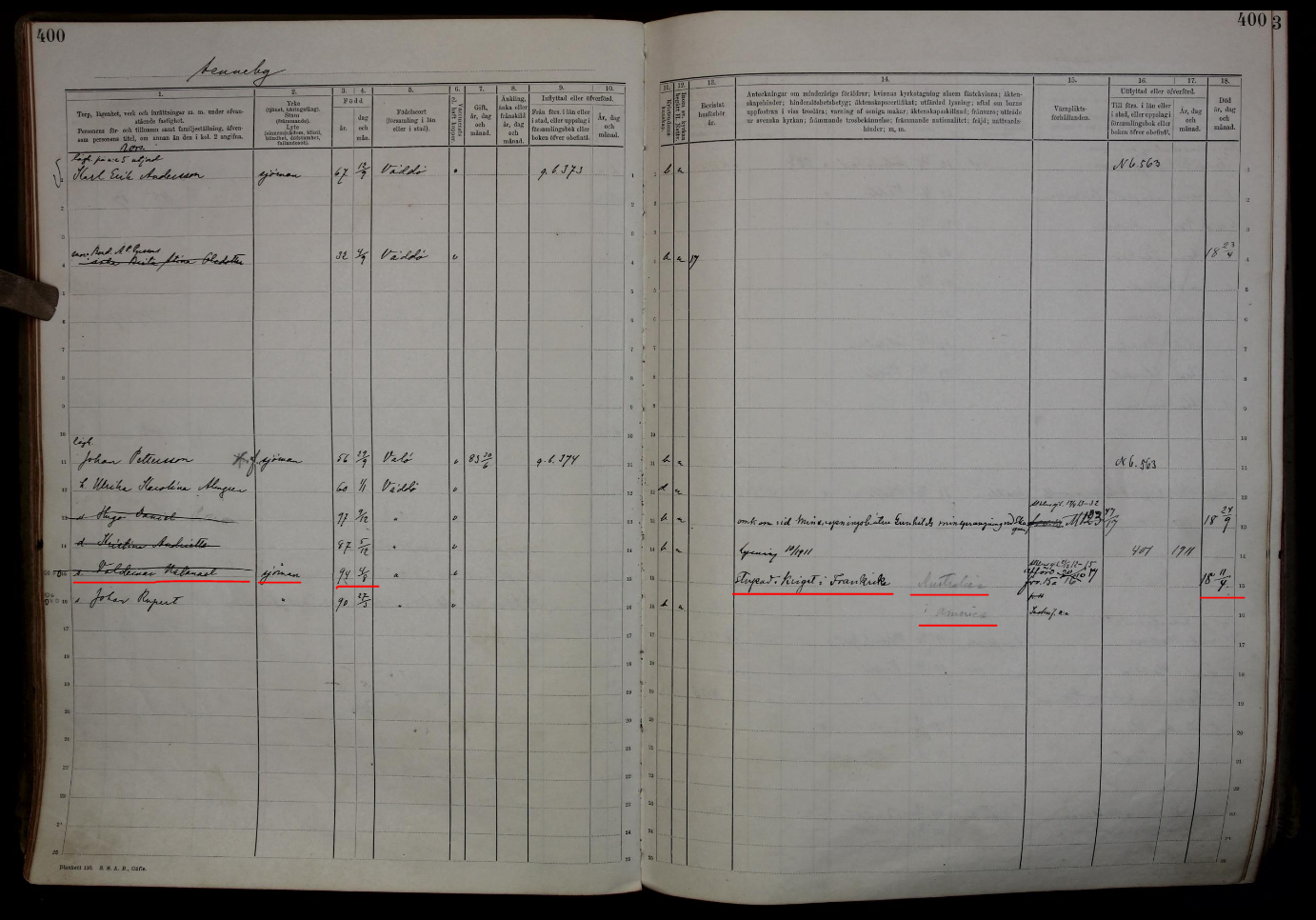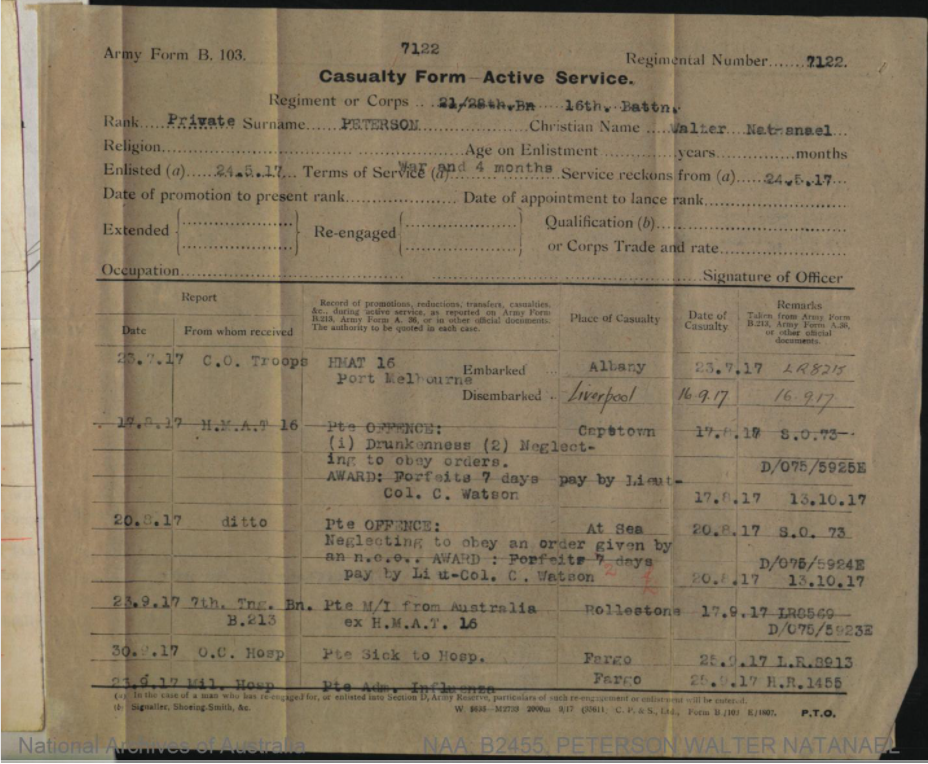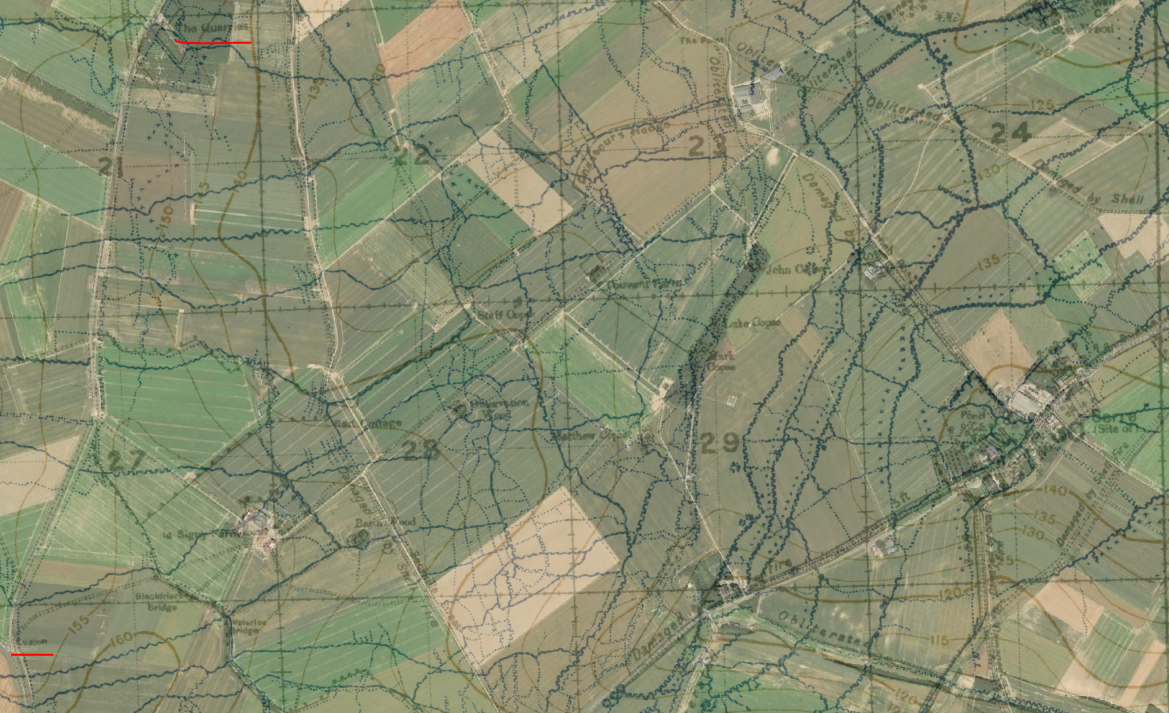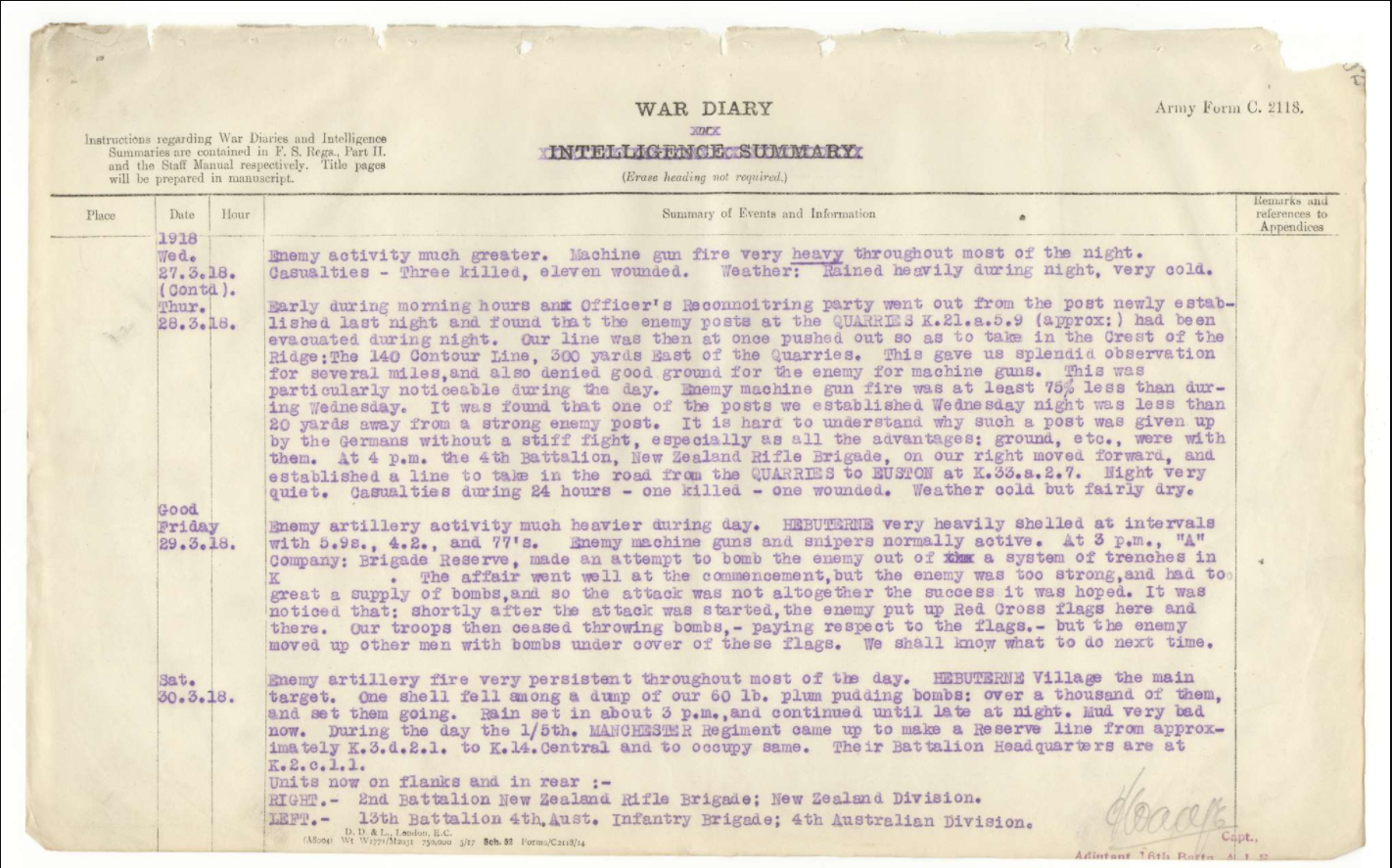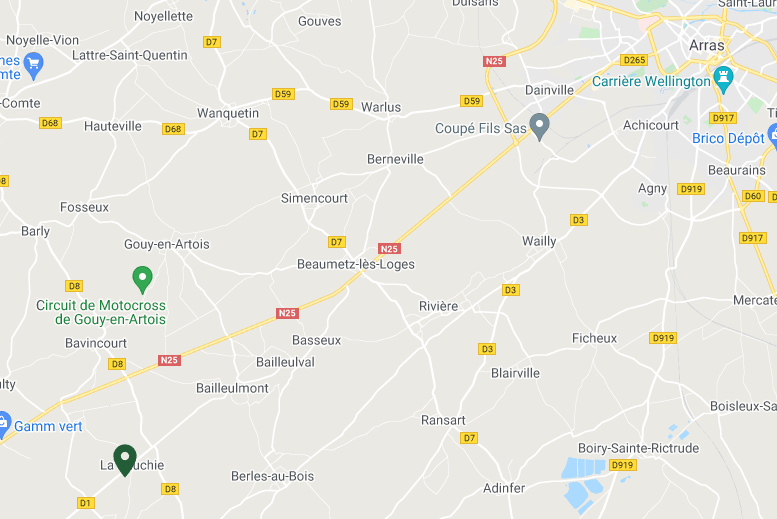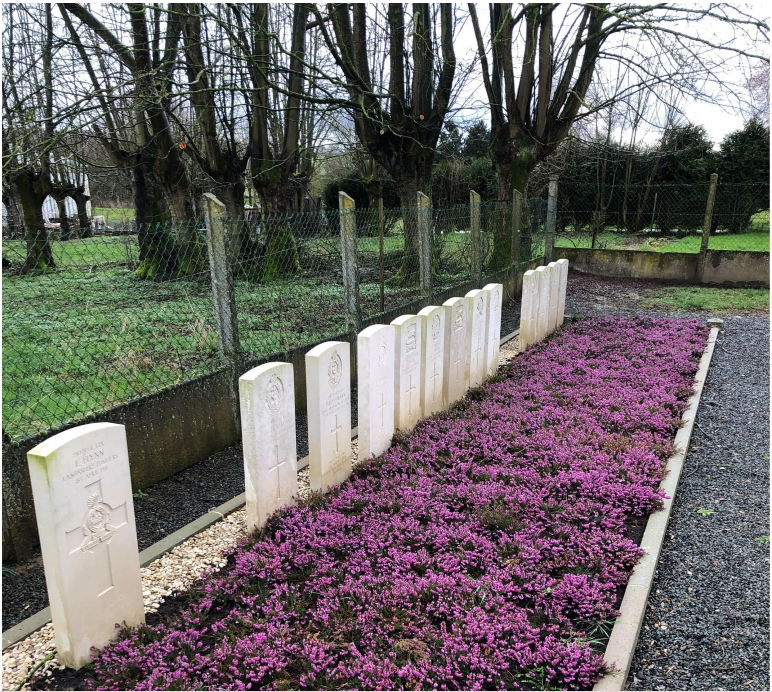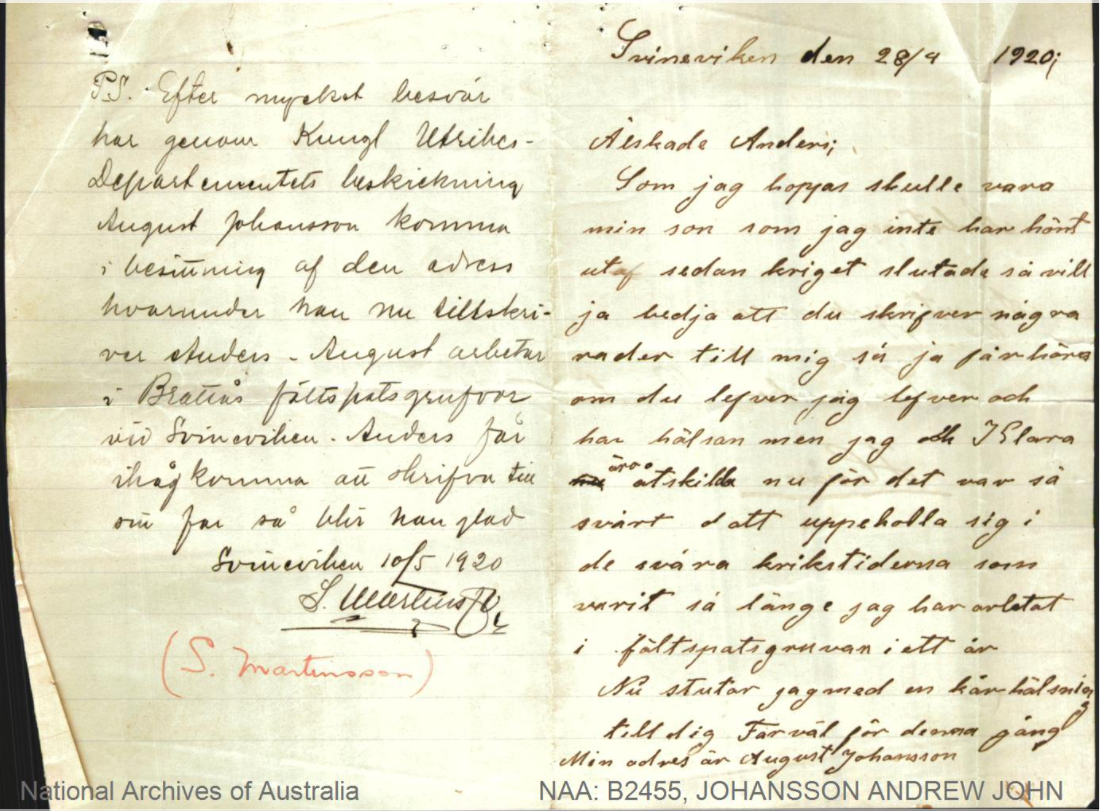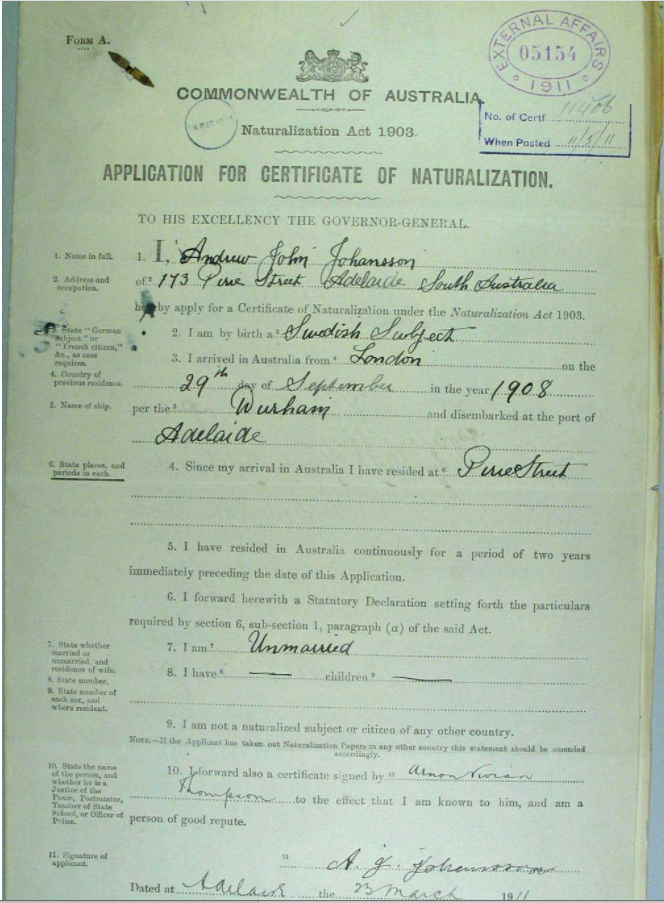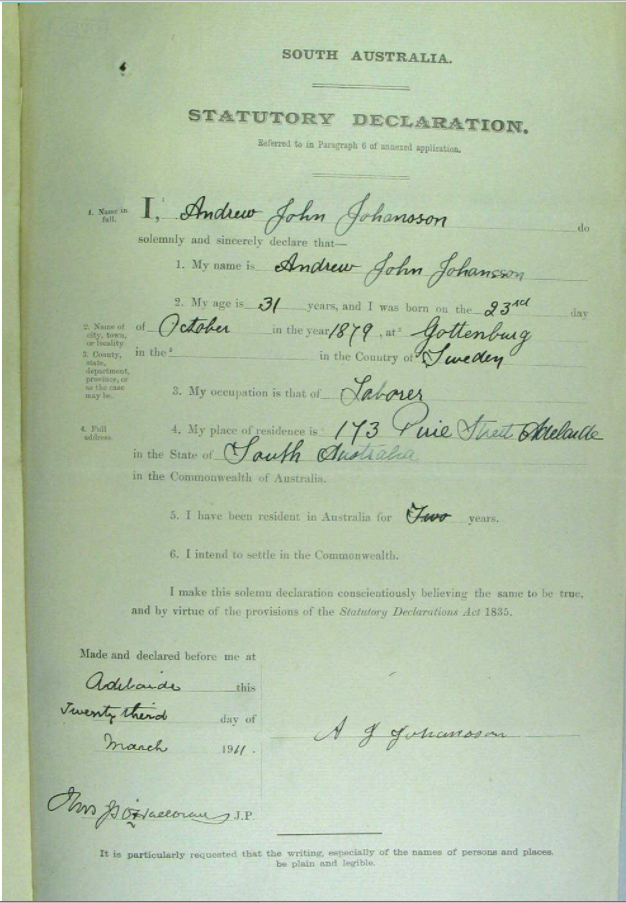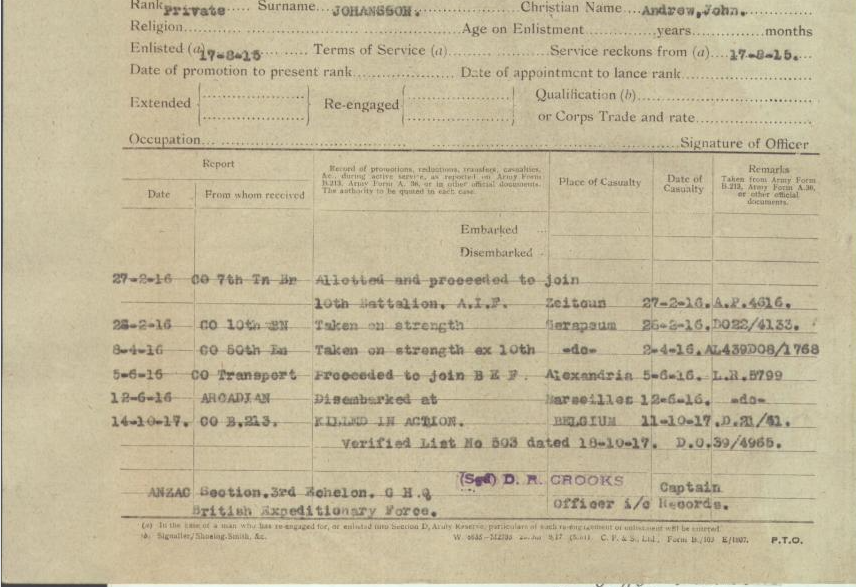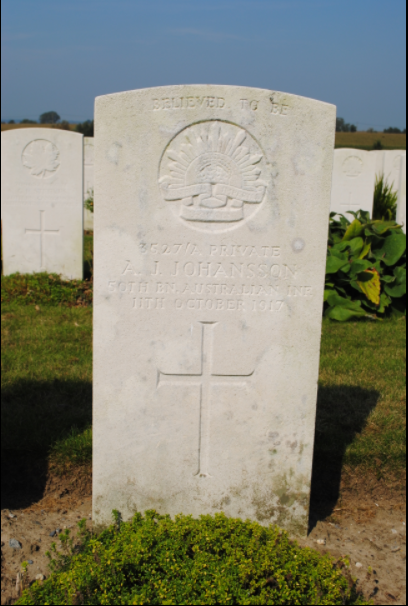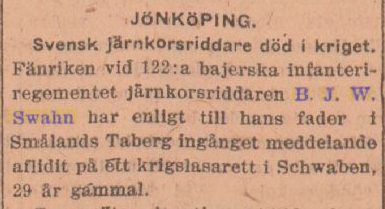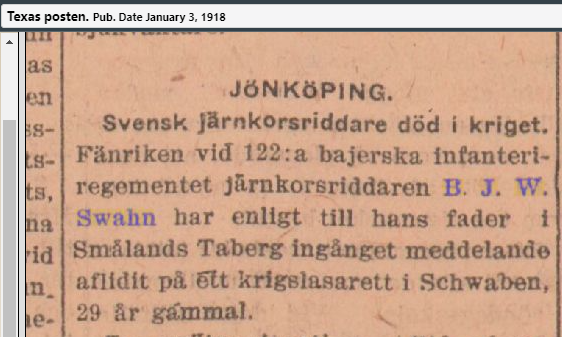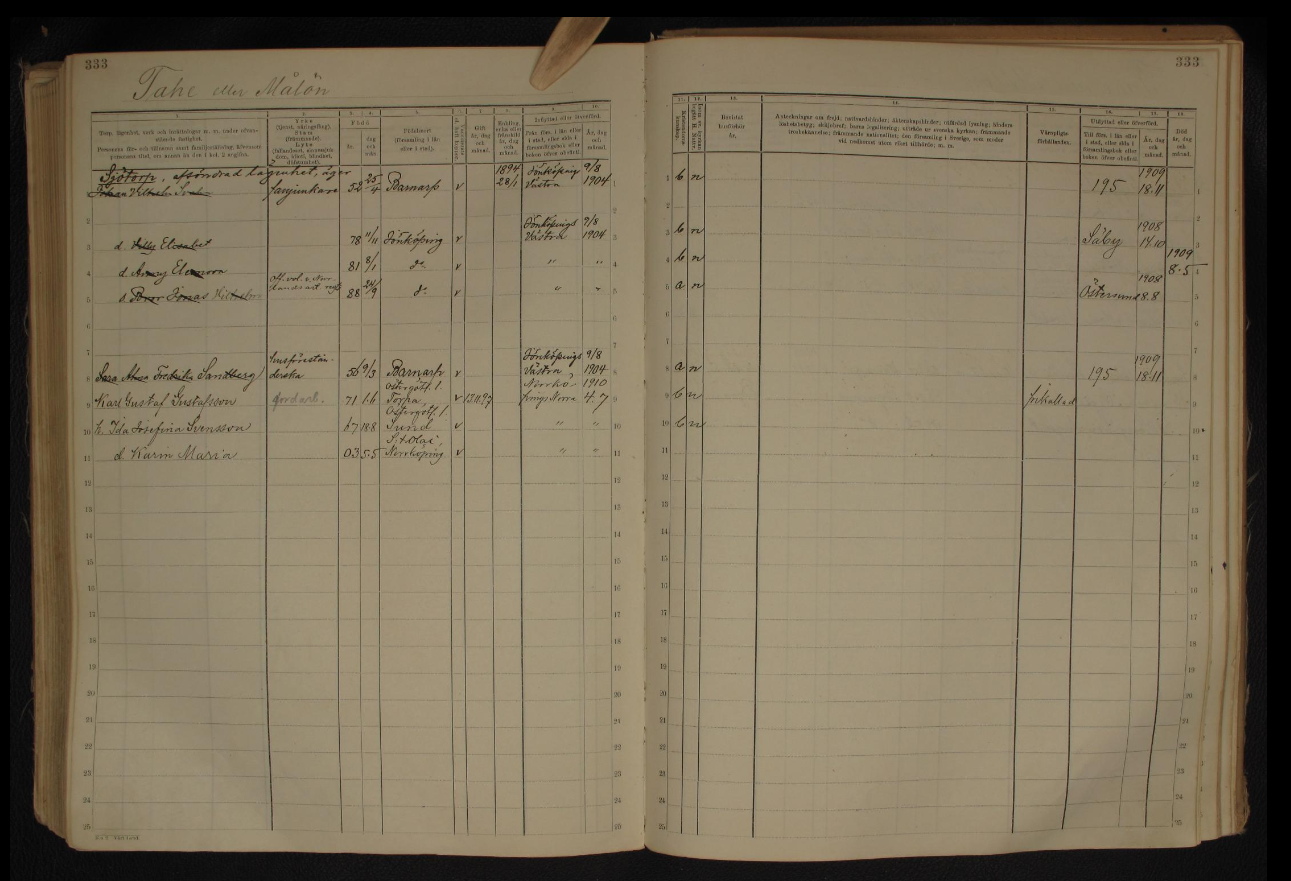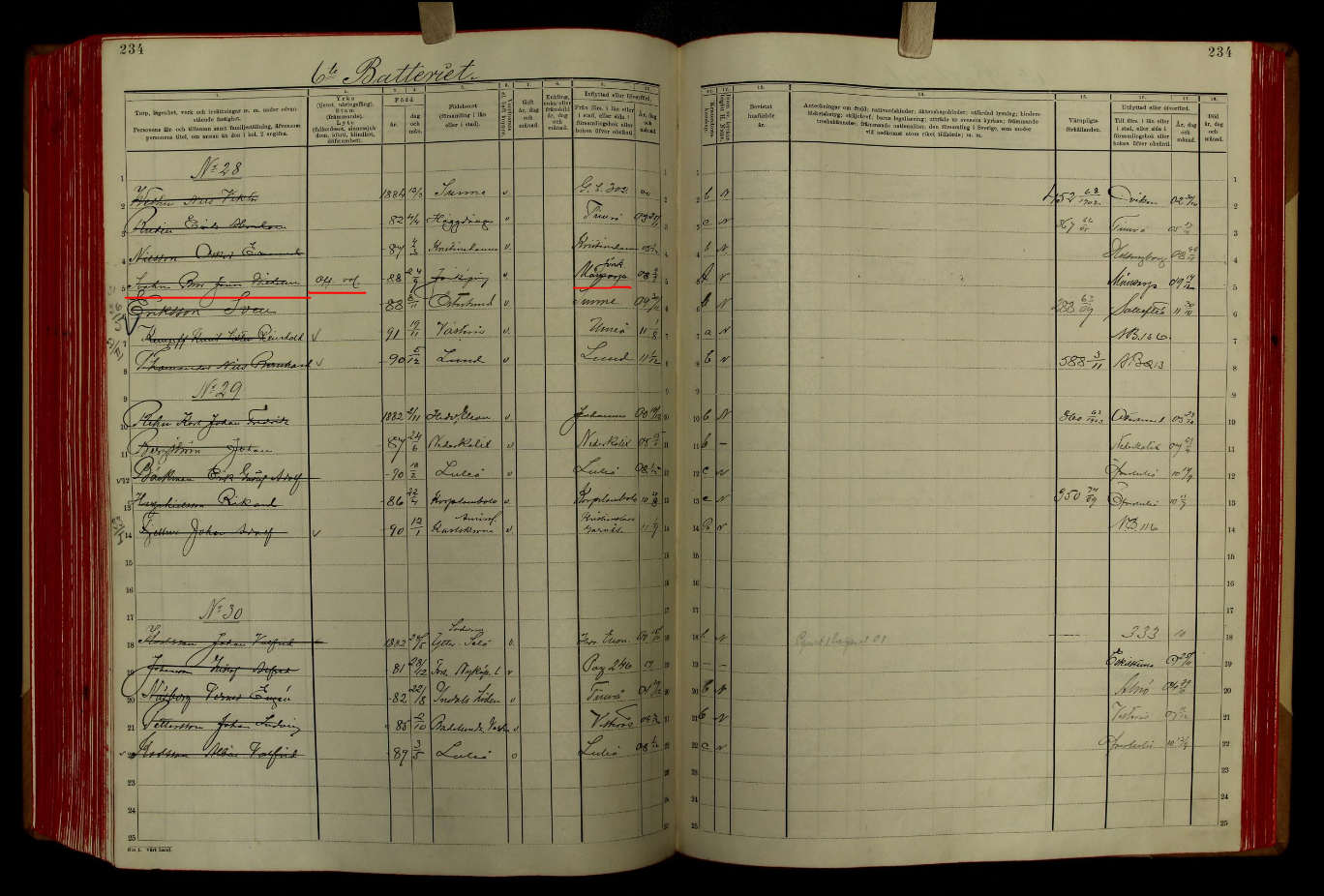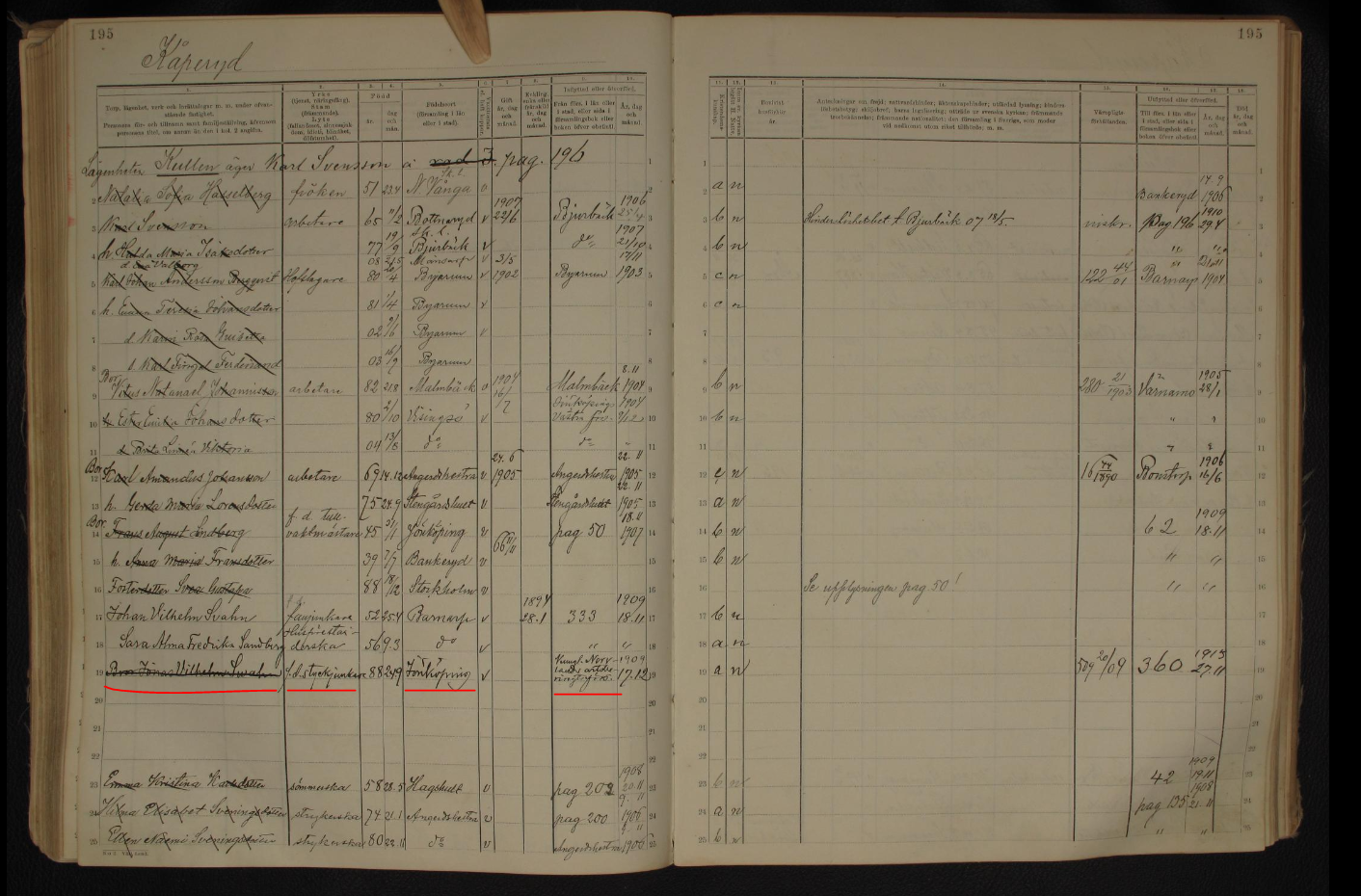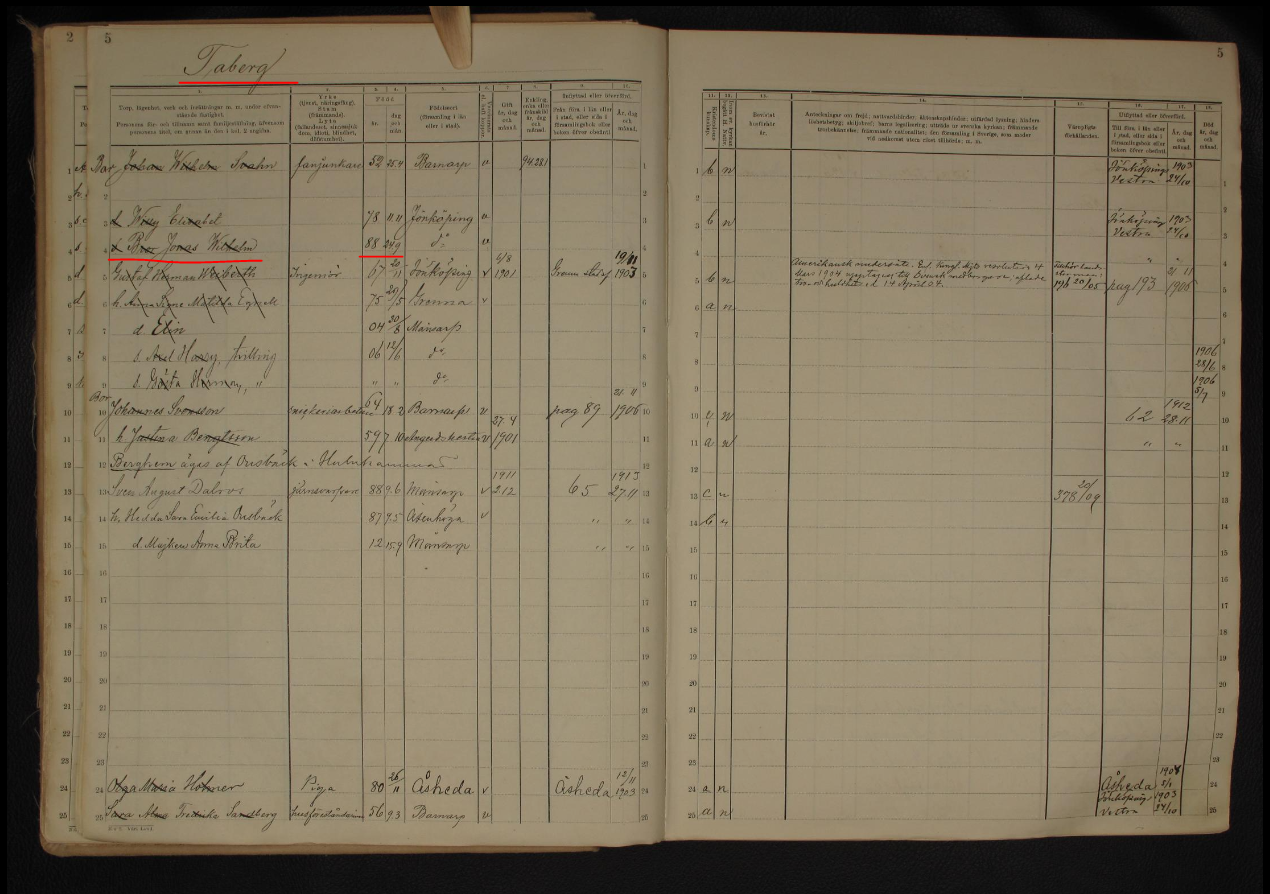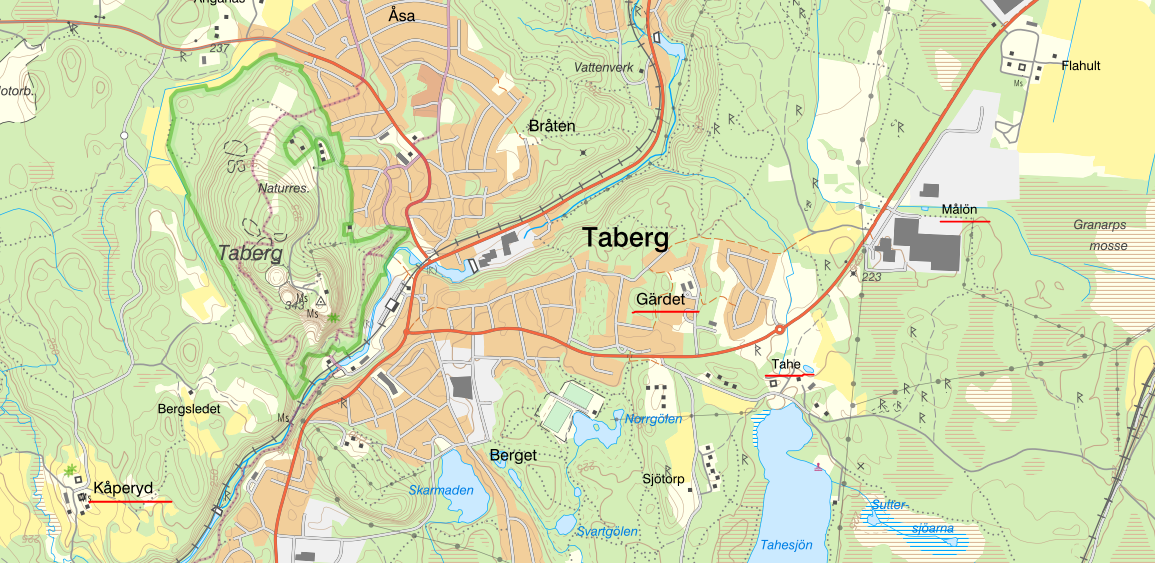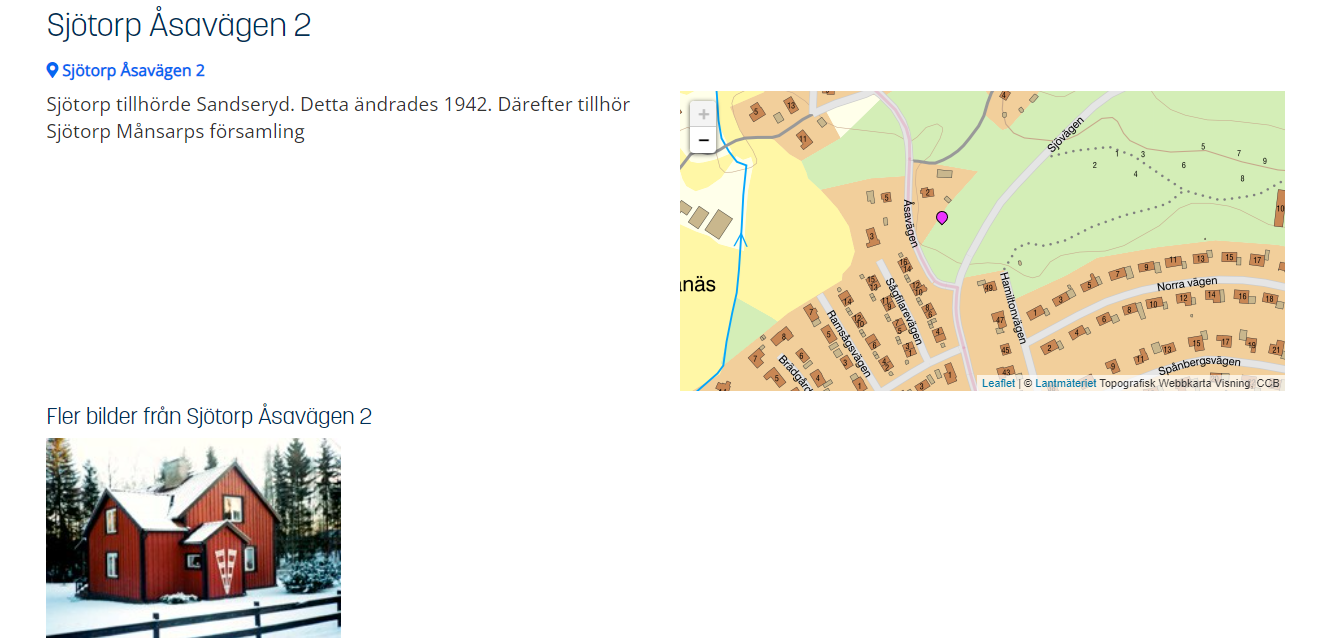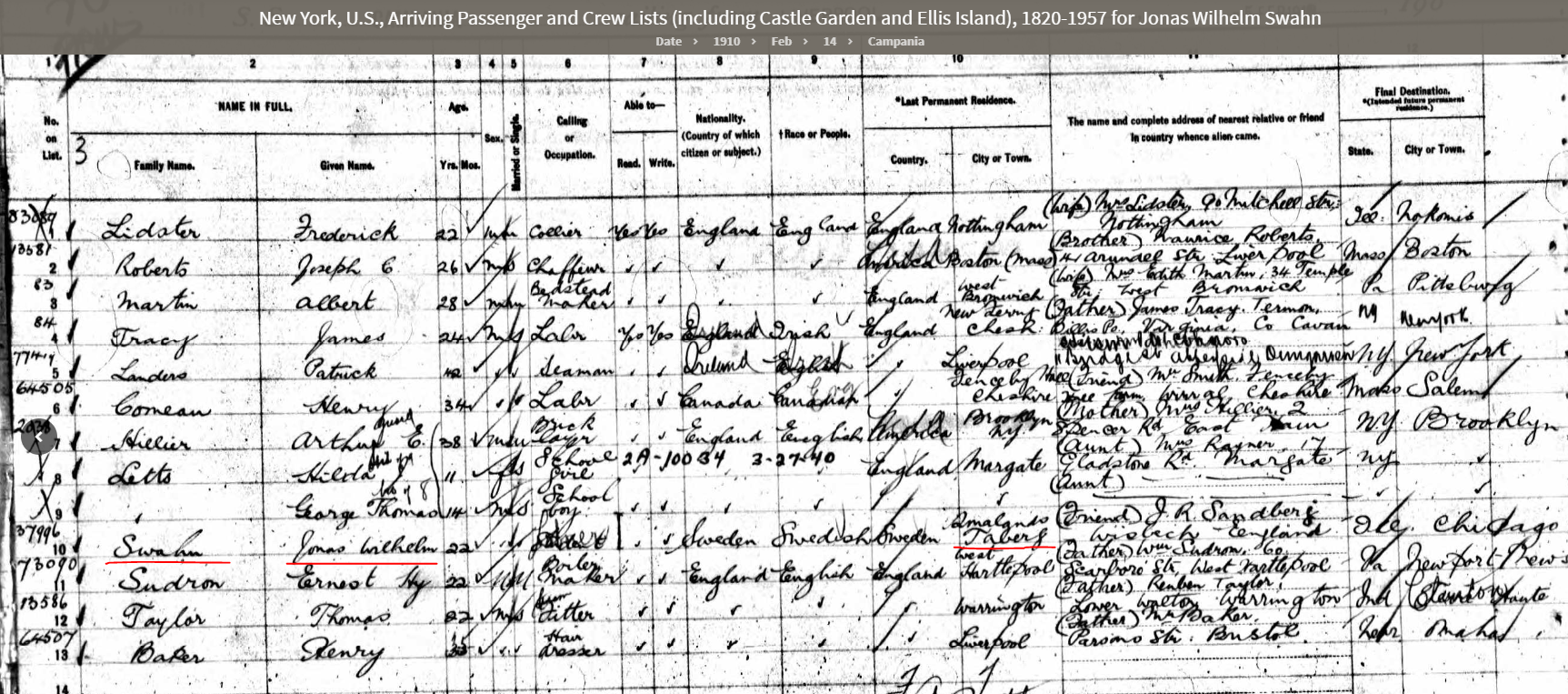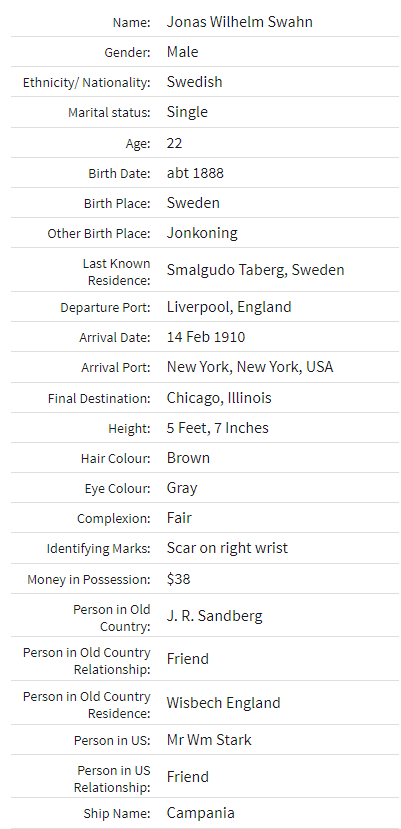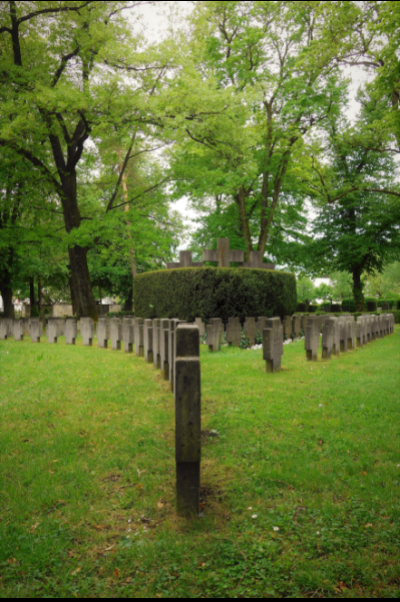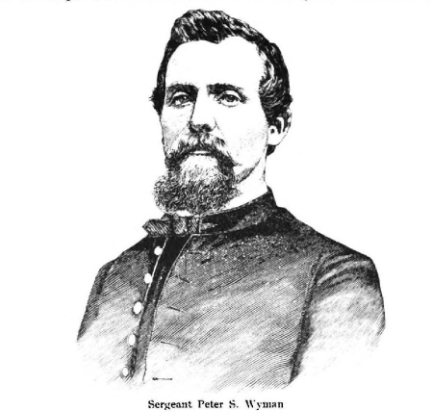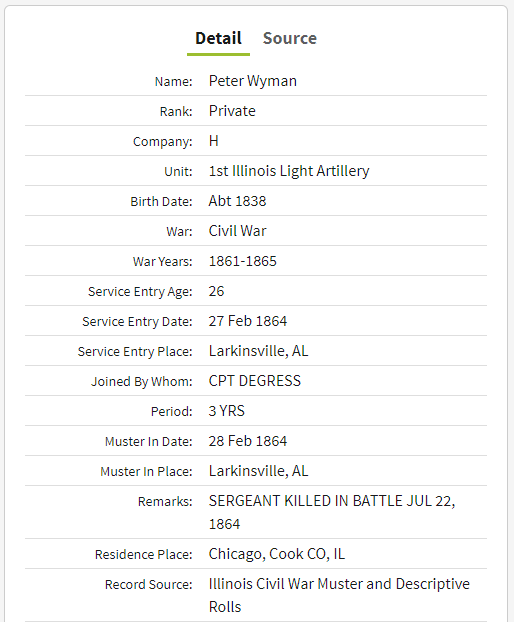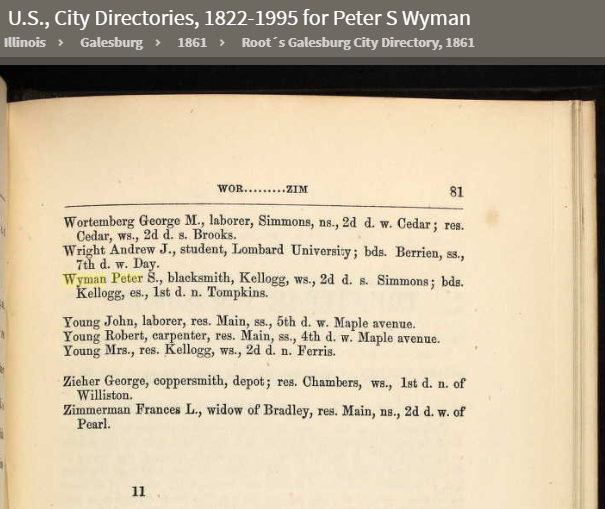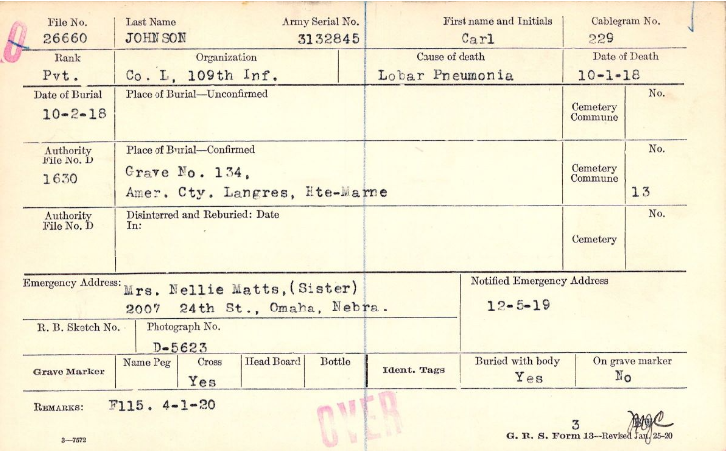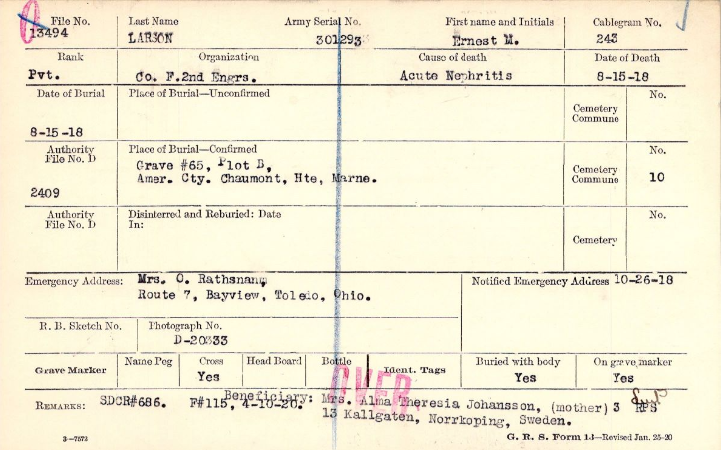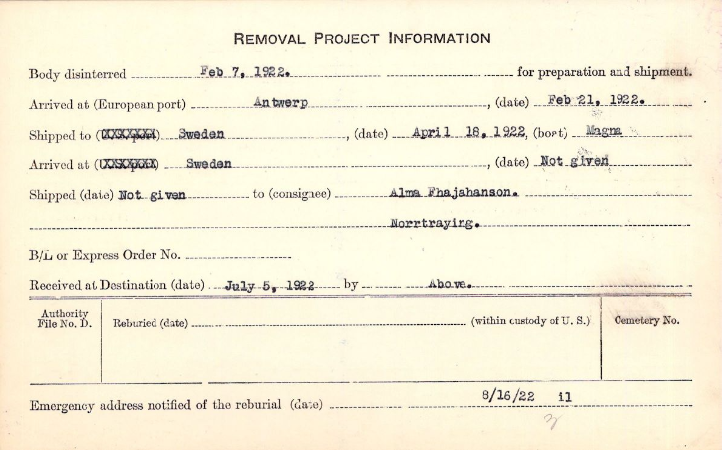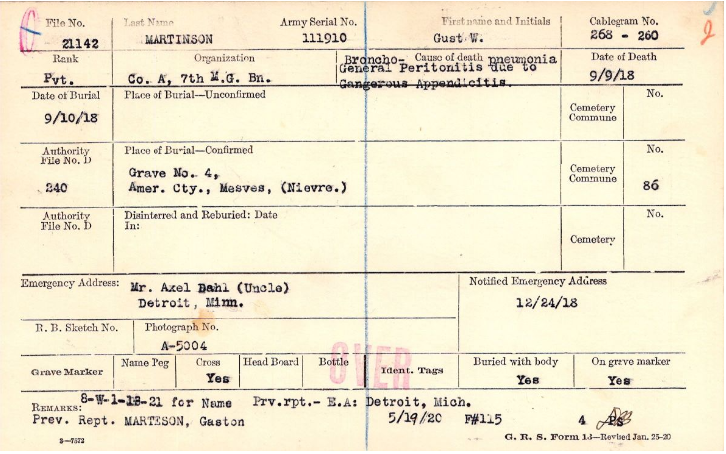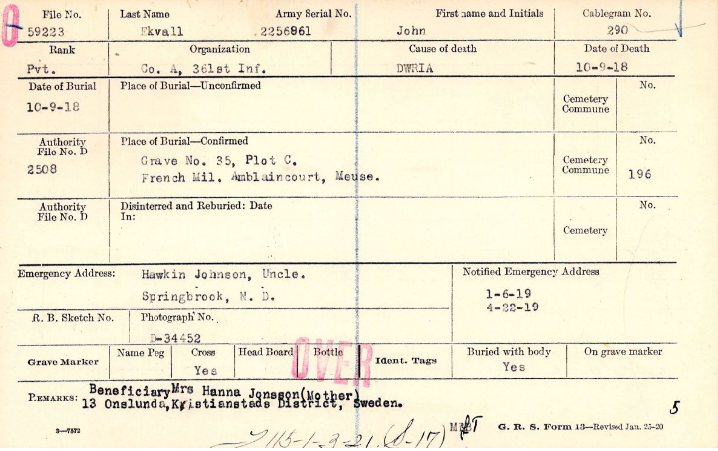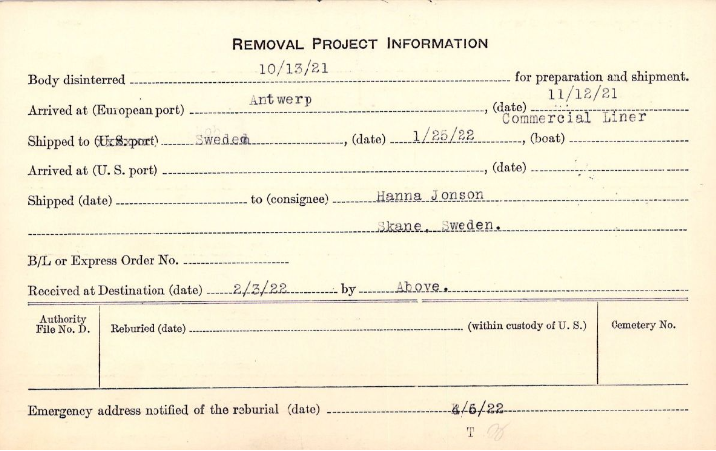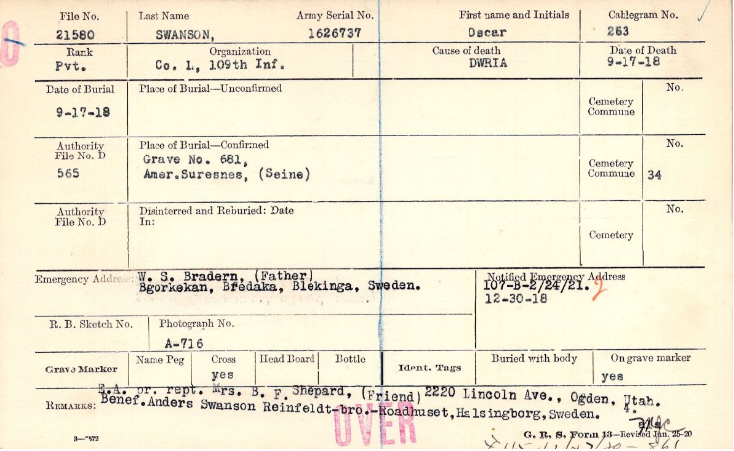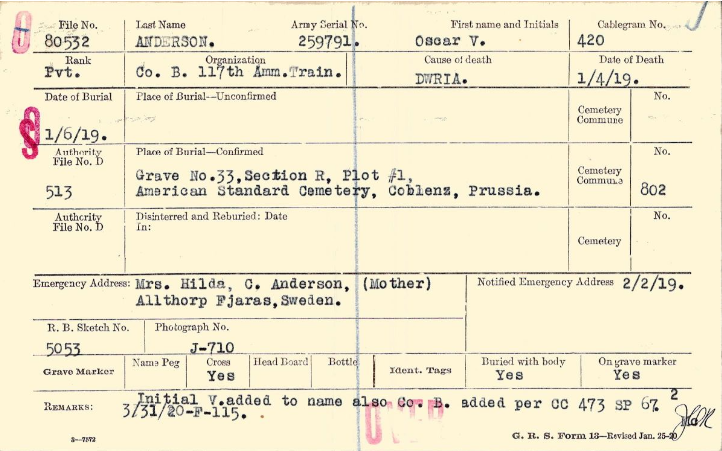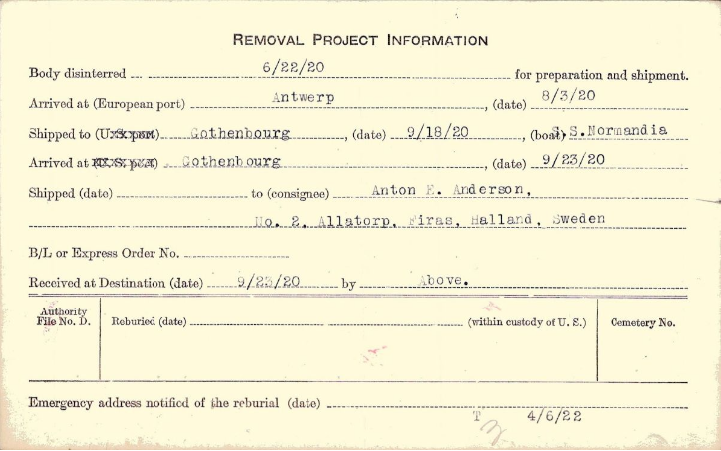If you missed my presentation from January 6th, 2022, together with “OTD Canadian Military History” on his youtube channel, you can find it in this post and to the menu on the right.
The brave Dane
In my research I cover Swedish born soldiers, but quite often I find other soldiers who are born in other Nordic countries, and it is always interesting to put the data that I have found into a context which makes the events more interesting from a historical perspective.
Like in this case. I was skimming through some casaulty cards from those who fell in the Great War when they fought for the American Expeditionary Forces.
I found this card from a Danish born soldier, John Rees. The thing that cought my eye was the short description about his bravery in battle.
He was awarded for extraordinary heroism in action, September 29, 1918, when he fought in the Meuse-Argonne Offensive. He survived the specific situation, but could have been part of those who supported 32nd Division in the area around the German Kriemhilde-Stellung, when he fell in October 9, 1918.
For his actions he received the Distinguished Service Cross, and the the words below is attached to this recognition.
In my mind I ask myself if any of those Swedish born soldiers, who also fought the same day as John Rees, and also in the same unit, 91st Division, 361st Regiment, AEF, knew about eachother. Maybe they participated in the same attacks, in the area south of Gegnes, and saw or heard any of those heroic actions John Rees went through? Sadly those Swedes fell in the situation that day of September 29, 1918.
Those three Swedes were Carl A Nelson, Carl M Carlson and Claus E Nygren. Below you see a screenshot from my project at Google Earth, where the unit is assessed to have been that day.
There are some documents that connects John Rees to Denmark, and I have found them on Ancestry. There is also some deviating facts in these archives, and these wrong facts are later on transferred to other sites, which makes it a bit difficult to confirm the data. His father’s name is mentioned on the casualty card, which I also find the facts about emigration. the The Danish town of Them in Salten, Jutland, Denmark, just south of the town of Silkeborg is also mentioned. It looks like he left Denmark from Copenhagen in 1914.
John Rees is buried at the American Cemetery in Meuse-Argonne Below there is a photo of John, and in some archives this photo is connected to his name, but I can’t fully confirm this.
We will never know if this Dane knew any of those Swedes who fought together that day, but may all of these Nordic soldiers rest in peace.
Archive detective work, again.
This friday evening I decided to scan some digitized newspapers from Australia, and with heavy eyelids after a hectic workday I scan it quite easily, and finding only names that I know from before. My main goal is to scan for Swedes that participated in the Dardanelles fightings, as I have a few of them already in my database. Suddenly I see a name that I will look a bit more into.
Walter Natanael Peterson, it says also Sweden, died of wounds.
Strange, I can’t remember that I have read the name Natanael before in my project, but of course, I could have missed him. In a strange way I put the data that I have in my research, in my head. And you know if you find something new. Strange to remember those things, but not remember names of colleagues at work … or maybe not.
I decide to look him up in the National Archives of Australia, and I find him quite easy by his name, Walter Natanael. It says that he is born in North America, in Brookland, a part of the city Washington. An American subject, but the relatives are stated to be in Stockholm. It could so be, but I decide to search for him in other Swedish Archives.
As you can see in the picture above it says that the name of one of his relatives is “Guhin”. Never heard that name before. I can barely see it but it says that his mother is Carolina. I take those names with me in my search in the Swedish archives.
Not very successful when it comes to find anything with Walter Natanael, that suits the age he has stated in the papers. I think he must be born around 1894, and that is useful in further search. (year 1917 minus 23, as he is 23 in maybe July, August, 1917)
I decide to go back again to the Australian archive under his profile, and I the find some interesting facts. I still don’t know if he is born in Sweden or not.
Ah, his name is not Walter Natanael, it is actually Valdemar Natanael, very good lead in further investigation.
I go back again to the Swedish archives and use “Valdemar” instead of Walter. I find quite many though, but decide to also use the name of the relatives, especially Carolina.
Interesting. I find a family from Väddö, north of Stockholm, on the east coast. I see quiet fast that the family contains a Valdemar Natanael, a mother, Carolina, and a father, Johan. Johan … maybe Guhin (from above) is Johan? Probably. I feel it is burning now. The surname of the family is also Petterson.
Scanning many pages in the church book within this family, but nothing points to Australia, nothing at all. I see that Natanael is a sailor, like 90% of all the other Swedish soldiers that fought for Australia.
Finally, on the last page, I find what I am looking for, marked with a pencil.
“Australia”, In America” and also “fell in the war in France” written with a pen. Out on the right side is the death date, but it says April 11th, 1918 instead of March 28, 1918. It comes from the Swedish church book, about his death, that says “Fell in the war in France, died in the ambulance”, dated April 11th, 1918. The ambulance is also mentioned in the documents from Australian archives.
He seems to have been a quite stubborn gentleman, it is noted a couple of times that he didn’t obey orders and he was punished for that. I can see hin in front of me, a sailor with tatoos, seen a lot, done a lot, and then sometimes it becomes to much to drink. One time in Capetown and one time at sea.
Walter, or Valdemar, was fighting with the 28th Infantry battalion, Australian Imperial Forces, when he was injured somewhere in Hébuterme area in France, around March 28th, 1918. The diary from the unit tells us about the area between Euston and The Quarry, which you can find on the trench map below. Valdemar where probably somewhere in that area when he fell.
Valdemar is buried at La Cauchie Communal cemetery in the region Pas De Calais, France, just southwest of the town Arras. That part of the cemetery just contain 13 headstones, and no 11 is the stone of Valdemar. The stones are in the end of the cemetery if you walk in from the street, and are located in the village communal cemetery.
Walter was not Walter, he was Valdemar. He was born in Sweden, not in North America. I wonder what it was that made him mention another name, and another location of birth. We will never know that, but this kind of story just gives me more energy to really find our Swedes who fought in the Great War.
May Valdemar rest in peace. I will visit you as soon as I can. We will remember them.
The next phase …
I have now found quite many individuals in my research, who are within my criterias for my project, as you can read more about through the main menu at my front page.
So far I have found 412 Swedish born soldiers who all fell and are buried at the Western Front in Belgium and France.
Through the time I almost have learned to know them, in my hunt for facts about their life and faith, before the made their ulimate sacrifice in the Great War. I will now start to make portraits about as many individuals that I can, which later on will be the base of the material in my book that I am planning to write.
A guidebook, for those who want to walk in the footsteps of those Swedes, and see the areas, know the fights and battles they participated and fell in, and it will be really nice to compile all the info that I have, and probably find new facts, not discovered before.
I realize the magnitude of the work, but at the same time, I feel that I owe them to do this. I will be the one who will bring their history into the light, especially for the Swedes in Sweden today, who I think should learn this, the history of our ancestries, what they actually did, when we said that “Sweden did not participate in the World Wars …”
As a country we did not, but the sons of our country did, for their new countries, or the countries they supported, voluntarily.
I will here give you an example of some facts that maybe will be in the portraits of the individuals, a letter from a father who is longing for his son, who died many years before the letter was written …
The letter is found below. The translation into english is found under the letter.
From right to left:
Svineviken, April 28, 1920
Dear Andrew (Anders)
I so hoped would be my son, who from I haven´t heard anything since the War ended, I beg you to write a couple of lines to me so I can hear that you are alive. I am alive and having the health but me and Klara are separated now because it was very hard to manage the hard times during the War, which were present for so long. I have worked in the Feldspar Mine for a year. I now end the letter with a dear greeting to you, good bye for now. My address is August Johansson …
PS. After a lot of trouble, has August Johansson through the Ministry of foreign affair found the address, which August use to write to Andrew (Anders) – August is now working at the Feldspar Mine in Brattås in Svineviken. Andrew has to remember now, to write to his father to make him happy.
Svineviken, May 10th, 1920.
S Martinsson.
Imagine to write to your son around 2,5 years after his death, dont knowing if he is alive or not.
Andrew John Johansson (Anders Johan Johansson), Johansson from his father Johan August Olsson, even if he says August Johansson in the letter. Andrew was born in Tegneby, close to the city of Gothenburg, quite close to Svineviken mentioned in the letter, October 23, 1979.
Andrew became a sailor, and there is not any date stated when he left for Australia, but he made his Statutory Declaration in Adelaide, March 1911, and he arrived to Australia from London in 1908. Probably he left Sweden around that year as well.
Andrew joined the British Expeditionary Force (BEF) in Alexandria in June 1916, and proceeded to France. Andrew fought for the 50th Infantry battalion in the Third battle of Ypres and fell October 11, 1917. Andrew is buried in Passchendaele New British Cemetery in Belgium.
For some reason I have missed to take a photo of his headstone when I was in the area, but I will do it next time when in Belgium. May Andrew rest in peace.
WW1 history around the corner
Once again I was searching through old digitized Swedish-American Newspapers, and stumbled over a small note, who said, in my perspective, interesting facts. I saw the name of my village, where I live today.
The small text informed me about a father who was grieved his lost son, who was a soldier in the 122nd Bayerische Infanterie Regemente, and the father had just received info that his son fell, but it didnt tell any date. You find the small note below, and beneath it I have translated it into english.
I made two pictures, one with the text and one with the text but also including the date from The newspaper, The Texas Post from early January, and I assume his son fell in 1917.
“Jönköping. Swedish Iron Cross Knight dead in the war. The 2nd Lt in the 122nd Bavarian Infantry Regiment, Iron Cross Knight B. J. W. Swahn, has according to a message to his father in Smålands Taberg died in a war hospital in Schwaben, 29 years old.”
It is always interesting to find this information in a American Newspaper from Texas, from over 100 years ago. I understand now, from reading a lot of those newspapers, that it was important for the Swedish Emigrants in North America to read about the faith of their countrymen.
I assume that B J W Swahn died in 1917, and he should then be born around 1888. The thing I know is that his father probably also has the surname “Swahn”.
I first search in the archive from Volksbund Deutsche Kriegsgräberfürsorge, and I search for “Swahn”. You can see the result below.
It must be him. 1888 and Jönköping is correct, and also that he died in 1917 is also correct. Now I have date of birth.
I go into the Swedish Archive portal “Arkiv Digital” and search for Wilhelm Swahn, born September 24, 1888. And there he is, with all his family. B. J. W. Swahn becomes Bror Jonas Wilhelm Svahn, born in Jönköping, Sweden, and raised by his mother, with the quite unusual name Aqvilina, Sandberg as Surname, and his father Johan Wilhelm Swahn.
Bror´s father is a military, from Jönköping Regiment, I 12, which later on together with Kalmar Regiment becomes Norra Smålands Regemente I 12, in 1927, my regiment, where I started my career.
Bror does his conscript, probably at the same regiment as his father, but later on becomes a sergeant, today the level of OR7, up North in Sweden, at Norrlands Artillery Regiment, A4, before he goes down south again.
On the map below you can see some of the places where he lived with his family, after has been born in Jönköping city.
You will find, underlined in red, some places that are mentioned in the church books, and also the small place called Sjötorp, with a map from just North-West of the word Taberg on the larger map, and how a house, that is called Sjötorp today, looks like. It can be in the same plot. I live in the area called “Gärdet” on the map.
I don’t find a lot of info from Bror and his history in the German Imperial Army, but I have some facts that says that he went to North America in 1910, but I haven’t found any information about when he went back again. I assume he did.
I have tried to find his regiment, to which Division he belonged, and it is highly likely that he belonged to the 122nd Infantry Regiment from Wurttemberg, in the 243 Infantry Division. There is a small text below from that regiment history, from 1917.
Bror Jonas Wilhelm Swahn is buried in Germany, in Schwaben region, in the cemetery of Kriegsgräberstätte in Schwäbisch Gmünd-Leonhardsfriedhof. May Bror rest in peace, I will remember him.
I will in february 2022 have a lecture in my local community, and I will of course mention him and, so far, three other individuals from the parish, who fought in the Great War, on the American side, but those other three survived. Maybe they met eachother? Who will ever know …
In this case I will not register Bror in my database, as he is not within the criterias, but nevertheless I will think about him and his family when I walk around in the area next time. Imagine, such interesting history, just around the corner.
A bit off the main topic – Swedes in the American Civil war.
It is quite easy, when searching about Swedes who fought and fell at the Western Front in The Great War, to also come across other facts in history. In this case I today came across some stories about Swedes who was involved in some fightings during the American Civil war.
It is earlier mentioned by the famous Swedish author, Lars Gyllenhaal, and his cowriter Lennart Westerberg, in their book about “Swedes in War” (Svenskar i Krig), that they assess that about 3500 Swedish born individuals who had emigrated from Sweden to the America fought for the union, and that about a couple of hundred Swedish born fought for the other side, the southern.
Earlier this evening, when searching for facts about another soldier, who fell at the Western Front, I came across some facts from another book, “Swedes in Illinois – historical notes” by the Swede John Ericson from New York.
A small story mention how a battery in the union, named and commanded by the Captain Silfversparre, who participated in the fightings around Shiloh, for a couple of days. Later on Captain Silfversparre left the unit for several reason, but there were no doubts that he did a great job commanding the battery.
The fight went on, and they fought nearby the cities of Corinth and Vicksburg, and later on Jackson, Mission Ridge and Lookout Mountains. In 1864 theyt also fought in Resacka, Kingston, Dallas, Altoona and Kenesaw Moutains.
In the fightings June 22nd 1864, around Atlanta, the battery with their new commander did a great job for the union troops. But they also lost a Swedish born sergeant named Peter S Wyman.
Peter was the commander of one of the units cannons, no 2, and they formed up in a half circle againts a five time larger unit, and therefor the commander ordered a retreat, but the commander of the battery, De Graas, and Peter, stayed by their weapon just to give the enemy their last loaded bullets, but Peter was not satisfied and reloaded one of the cannons, shot it at the enemy, spiked the gun and turned around to run back, but in that moment he was hit by three bullets and died on the spot.
If he just had lived for another day, he would have been promoted. The text says he is buried in an unmarked spot in the area where he fell. May he rest in peace.
Peter was born in Sweden , and it is stated in the text I found that he was born in 1836 in the parish of Ysanna, Blekinge, Sweden, but I assume it is the parish Ysane today.
It is also mentioned that his surname was Yman, and then logically became Wyman in the states, but I can’t, for the moment, find anyone called Yman in Sweden, and probably it was another name, and he took the surname Wyman when he arrived to the states, maybe after his home in Ysane?
I will look further to see if I can find the person behind the name Peter S Wyman, I will come back.
Home to Sweden
As you know I am working with my research about Swedish born soldiers who fought and fell at the Western Front in The Great War, and are buried or commemorated at the Western Front as well. But in my research I also discover those Swedes who were brought home to Sweden. Those individuals will be put into my project, but will have a separate part in the database.
At the moment I am looking through the American archives, and so far, after a quite short time, I have so far found 9 Swedish born soldiers who fit to the above criteria. I will probably find more individuals that have been sent home to Sweden further on in my research.
Below you can find the casualty cards with the information about when they fell and when they were brought home to Sweden, instead of buried at the front, or sent back to relatives in the US.
But I have dicovered that it is very hard to find their final resting place in Sweden, as we don’t have an archive of all graves in Sweden. There are only some pages from people who voluntarily has put up some databases with names from different cemeteries in Sweden, and so far I have managed to find only one headstone and cemetery of the Swedes.
I received it from an person who contacted me through my site, and I will try to visit the place as soon as possible.
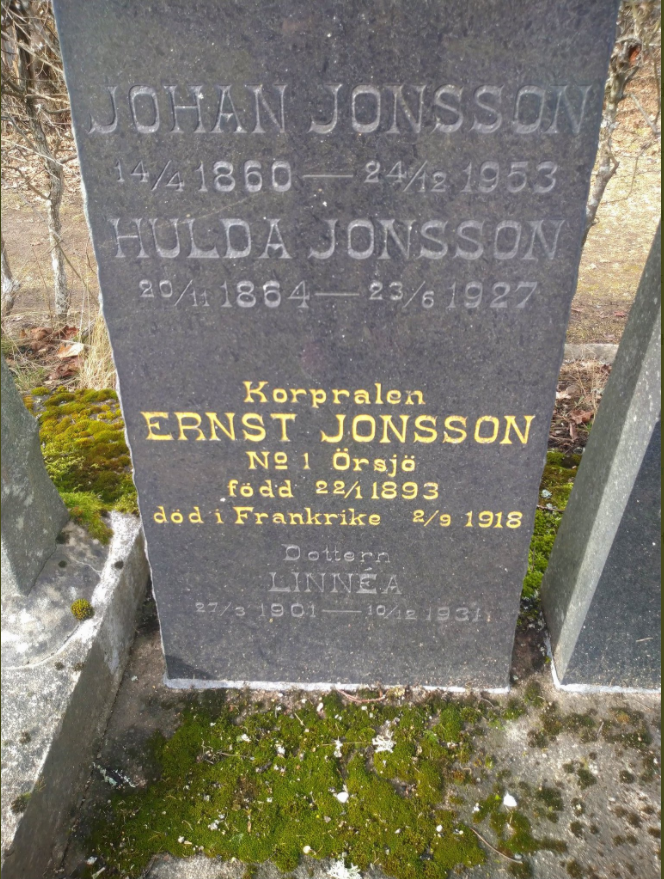
Örsjö Cemetery, close to Nybro, Kalmar Municipality.
There is a risk that the headstones are or will be moved from their original place, to the outskirt of the cemetery, as they have to make room for those who is next in line to be buried.
I really hope that I will find the rest of the places, before they are gone, and also the places from those Swedes I probably will find further on. It would be a great honour to commemorate them in their own country.
May all of them rest in peace.

